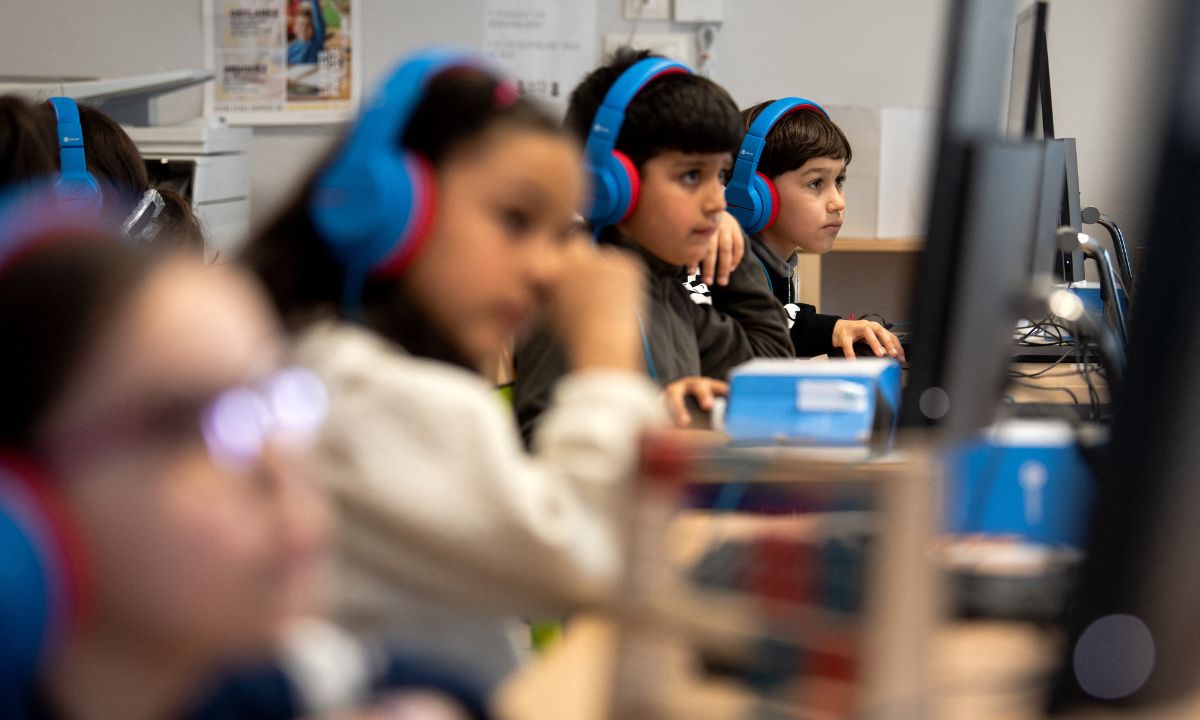Belonging Is the Missing Link in AI-integrated Classrooms
Crusey: We miss the moment if we use AI mainly to isolate learners instead of helping them engage meaningfully with content and with each other.

Get stories like this delivered straight to your inbox. Sign up for The 74 Newsletter
At this year’s ASU+GSV AI Show and Summit in San Diego, the message was loud and clear: Artificial intelligence is here, and it’s changing education, from “PreK to Gray.”
Across the expo floor and in session after session, I saw cutting-edge tools promising hyper-personalized learning, systems designed to tailor learning to each student’s unique path with near surgical precision. Press here, click there, and voilà: a customized roadmap to success.
But as I flew home, two questions stuck with me: Are we focusing so narrowly on the individual that we overlook the power of the group as a sum of wonderful individual parts? And are we overengineering AI’s potential by assuming precise interventions are required when it could be used to foster growth and connection.
AI holds real promise to create efficiencies in school operations, freeing educators and administrators to more effectively instruct and manage, but we miss the moment if we use it mainly to isolate learners instead of helping a group of learners engage meaningfully with content and with each other. Group dynamics do, and always will, matter, no matter the classroom or school type.
I’ve spent most of the past two decades in education, as a teacher, advocate, and now co-founder of a digital platform used in schools across Scandinavia and the U.S. Personalized learning has disrupted outdated models and brought welcome flexibility. But in my conversations with teachers and principals, from New Orleans to Copenhagen, the biggest barrier isn’t delivering content. It’s classroom and school dynamics that get in the way of both teaching and learning.
Even the most engaging lesson plan can fall flat if students don’t feel connected. School communities often have a culture of their own, but they aren’t immune to the broader dynamics happening around them. Learning — real, neuron-building learning — requires vulnerability. And vulnerability feels risky when you don’t feel seen by your peers. That’s true no matter your age. We all want to be seen, but no one wants to feel exposed, especially when wrestling with a difficult concept.
Just as students must apply knowledge to demonstrate mastery, why do we assume that building the so-called “soft skills” essential to careers and life — like empathy, collaboration, and self-efficacy — requires adult-led interventions? What if, instead, we empowered students to shift classroom dynamics by engaging directly with one another?
We’ve all seen how well this can work: most obviously in team sports, but also in thoughtful group projects and school traditions that create shared meaning. That’s why it’s puzzling that so many edtech solutions rush toward complexity without first exploring more organic ways to elevate insights from students themselves.
In one recent example, my team learned from a 5th grade class that “school” continuously showed up for them as a “top negative” after multiple anonymous AI-powered “check-ins.” After engaging in a low-stakes, fun 10-minute challenge, in which the AI-enabled platform guided a class through a silly “Round Robin Fairytale” activity, allowing students to work together to create a narrative. Students were laughing and interacting across well-worn social groups. During their next check-in, students were far more positive, and the teacher remarked to us how much more effectively she was able to transition the group into her instructional block after that.
And this isn’t just a classroom issue. It’s a societal one. We have some of the most powerful communication tools in human history, able to connect us across continents in seconds! Yet we’re struggling to coordinate, to understand each other, and too often just to solve problems together. This disconnection breeds anxiety, isolation, and mistrust.
On the other hand, we can all picture classrooms that are thriving. You can feel it: the energy, the collaboration, the lightbulb moments. A thriving blended learning environment hums with life when each student gets what they need and the whole group grows stronger together.
That’s why I believe the most powerful application of AI in education today isn’t personalization. It’s facilitation. Not replacing human connection but making space for it.
Imagine using AI not just to track mood or behavior, but also to enhance shared dynamics in a class, giving students the language and structure to reflect together, support one another, and co-create solutions. That could help educators and students together see more clearly what’s happening in the room and act with more intention, without feeling exposed.
Used wisely, AI can free up time, elevate insight, and support teachers in building the conditions where students feel they belong, so that real learning can take root. And when one student needs support, they can look not just to an adult, but to each other.
In an age of distraction and division, the most radical use of AI in schools may not be surgical precision, but collective attunement, so that growth toward proficiency isn’t an experience in isolation but in community.
Get stories like these delivered straight to your inbox. Sign up for The 74 Newsletter

;)